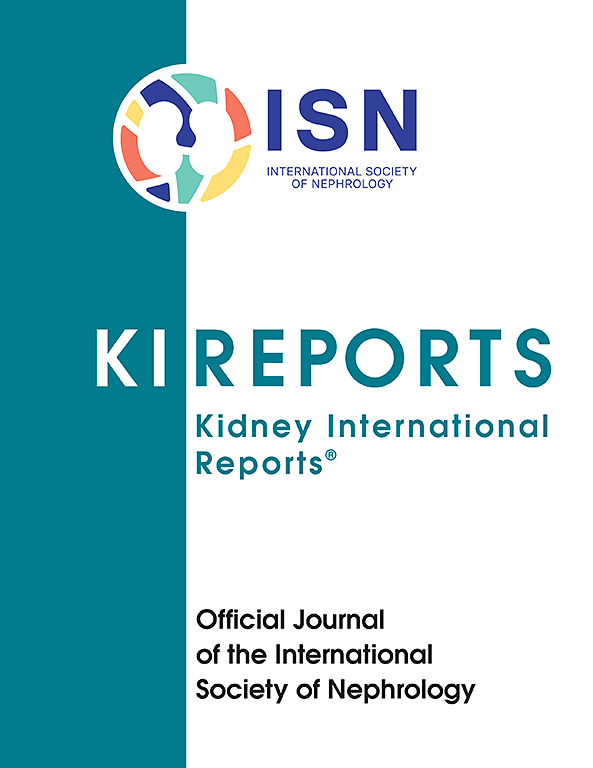利妥昔单抗治疗自身免疫性和肾小球疾病后持续B细胞耗竭:一个病例系列
IF 5.7
2区 医学
Q1 UROLOGY & NEPHROLOGY
引用次数: 0
摘要
持续性B细胞耗竭是利妥昔单抗治疗中一种罕见的并发症,其临床意义尚不清楚。方法本回顾性病例系列包括肾小球和自身免疫性疾病患者,这些患者出现持续性B细胞耗竭(<;5个CD19+CD20+细胞/μl;2年)末次服用利妥昔单抗后。结果在1519例接受利妥昔单抗治疗的患者中,2% (n = 30)出现持续性B细胞耗竭。在抗中性粒细胞胞浆自身抗体(ANCA)相关血管炎(AAV)、系统性红斑狼疮(SLE)或狼疮肾炎和足细胞病变中,持续B细胞耗损的频率分别为2.5%(22 / 878)、2.4%(2 / 82)和0.8%(1 / 114)。其余患者分别为anca阴性血管炎(n = 2)、抗肾小球基底膜病(n = 1)、白塞病(n = 1)和多发性肌炎(n = 1)。年龄中位数为64.5岁(四分位数间距[IQR]: 44-77)。在最后一剂利妥昔单抗之前,除2例患者外,所有患者均使用细胞毒性药物,通常延长(>;1年)或再循环疗程,60%(30人中有18人)接受了一段时间的长期类固醇维持治疗。在最后一次服用利妥昔单抗4年后,只有30%的患者有B细胞再生。在经历B细胞再生的患者中,B细胞计数仍然很低,在最后一次随访时中位数为7(6-15)个细胞/μl。在最后一次服用利妥昔单抗后,83%(30人中有23人)的疾病持续缓解。迟发性中性粒细胞减少症、复发性感染和严重感染发生率分别为23%(7 / 30)、47%(14 / 30)和57%(17 / 57)。在患者中,23%(30人中有7人)需要免疫球蛋白替代,30%(30人中有9人)死亡,主要死于慢性病并发症。结论持续性B细胞耗竭是利妥昔单抗治疗的罕见并发症,主要发生在接受细胞毒性治疗的复发性疾病患者。其特点是疾病缓解时间延长,感染风险增加。本文章由计算机程序翻译,如有差异,请以英文原文为准。

Persistent B Cell Depletion After Rituximab for Autoimmune and Glomerular Diseases: A Case Series
Introduction
Persistent B cell depletion is a rare complication of rituximab treatment, and its clinical implications are unknown.
Methods
This retrospective case series included patients with glomerular and autoimmune diseases who developed persistent B cell depletion (< 5 CD19+CD20+ cells/μl persisting for > 2 years) after the last rituximab dose.
Results
Among 1519 patients who received rituximab, 2% (n = 30) had persistent B cell depletion. The frequencies of persistent B cell depletion were 2.5% (22 of 878), 2.4% (2 of 82), and 0.8% (1 of 114) in antineutrophil cytoplasmic autoantibody (ANCA)-associated vasculitis (AAV), systemic lupus erythematosus (SLE) or lupus nephritis, and podocytopathies, respectively. The remaining patients had ANCA-negative vasculitis (n = 2), anti-glomerular basement membrane disease (n = 1), Behcet’s disease (n = 1), and polymyositis (n = 1). The median age was 64.5 (interquartile range [IQR]: 44–77) years. Before the last dose of rituximab, all patients except 2 used cytotoxic agents, often prolonged (> 1 year) or recycling courses, and 60% (18 of 30) received a period of long-term maintenance steroids. By 4 years after the last rituximab dose, only 30% had B cell repopulation. In those who experienced B cell repopulation, B cell counts remained very low, at a median of 7(6–15) cells/μl at the last follow-up. After the last rituximab dose, 83% (23 of 30) had sustained disease remission. Late-onset neutropenia, recurrent infections, and severe infections occurred in 23% (7 of 30), 47% (14 of 30), and 57% (17 of 57), respectively. Of the patients, 23% (7 of 30) required immunoglobulin replacement, and 30% (9 of 30) died, mostly from complications of chronic diseases.
Conclusion
Persistent B cell depletion is a rare complication of rituximab treatment, mostly affecting patients with exposure(s) to cytotoxic therapies for recurrent diseases. It is characterized by prolonged disease remission and increased infection risk.
求助全文
通过发布文献求助,成功后即可免费获取论文全文。
去求助
来源期刊

Kidney International Reports
Medicine-Nephrology
CiteScore
7.70
自引率
3.30%
发文量
1578
审稿时长
8 weeks
期刊介绍:
Kidney International Reports, an official journal of the International Society of Nephrology, is a peer-reviewed, open access journal devoted to the publication of leading research and developments related to kidney disease. With the primary aim of contributing to improved care of patients with kidney disease, the journal will publish original clinical and select translational articles and educational content related to the pathogenesis, evaluation and management of acute and chronic kidney disease, end stage renal disease (including transplantation), acid-base, fluid and electrolyte disturbances and hypertension. Of particular interest are submissions related to clinical trials, epidemiology, systematic reviews (including meta-analyses) and outcomes research. The journal will also provide a platform for wider dissemination of national and regional guidelines as well as consensus meeting reports.
 求助内容:
求助内容: 应助结果提醒方式:
应助结果提醒方式:


